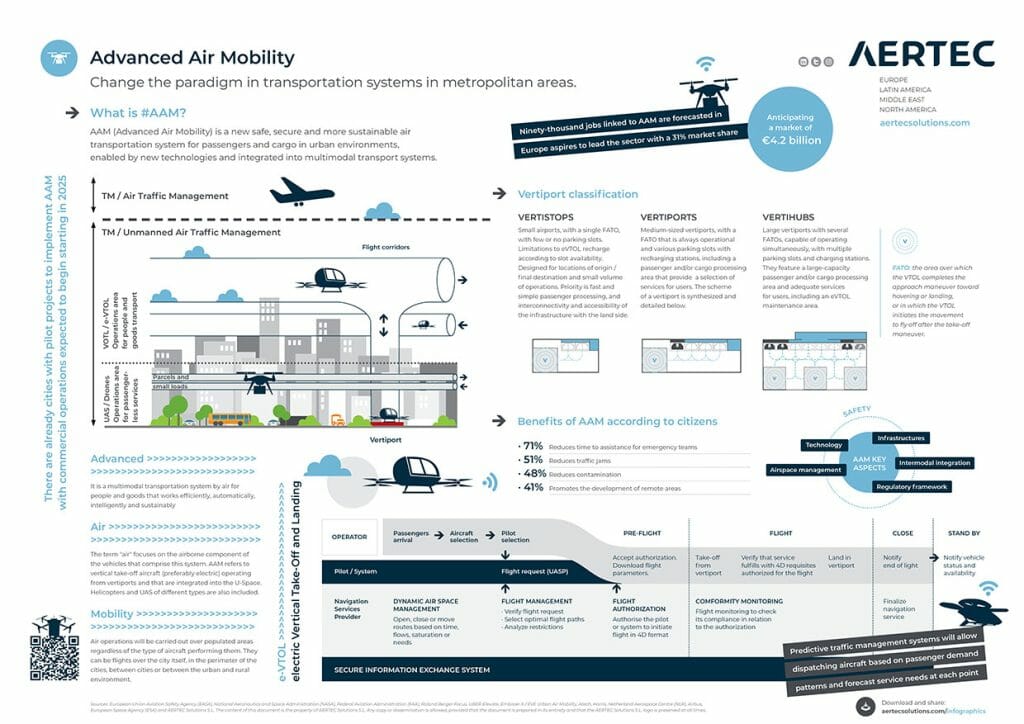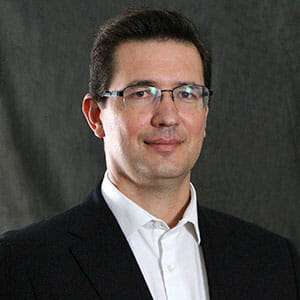Advanced Air Mobility
We’re ready to take the next step in air mobility because we’re already part of it. Let us guide you on this trip.
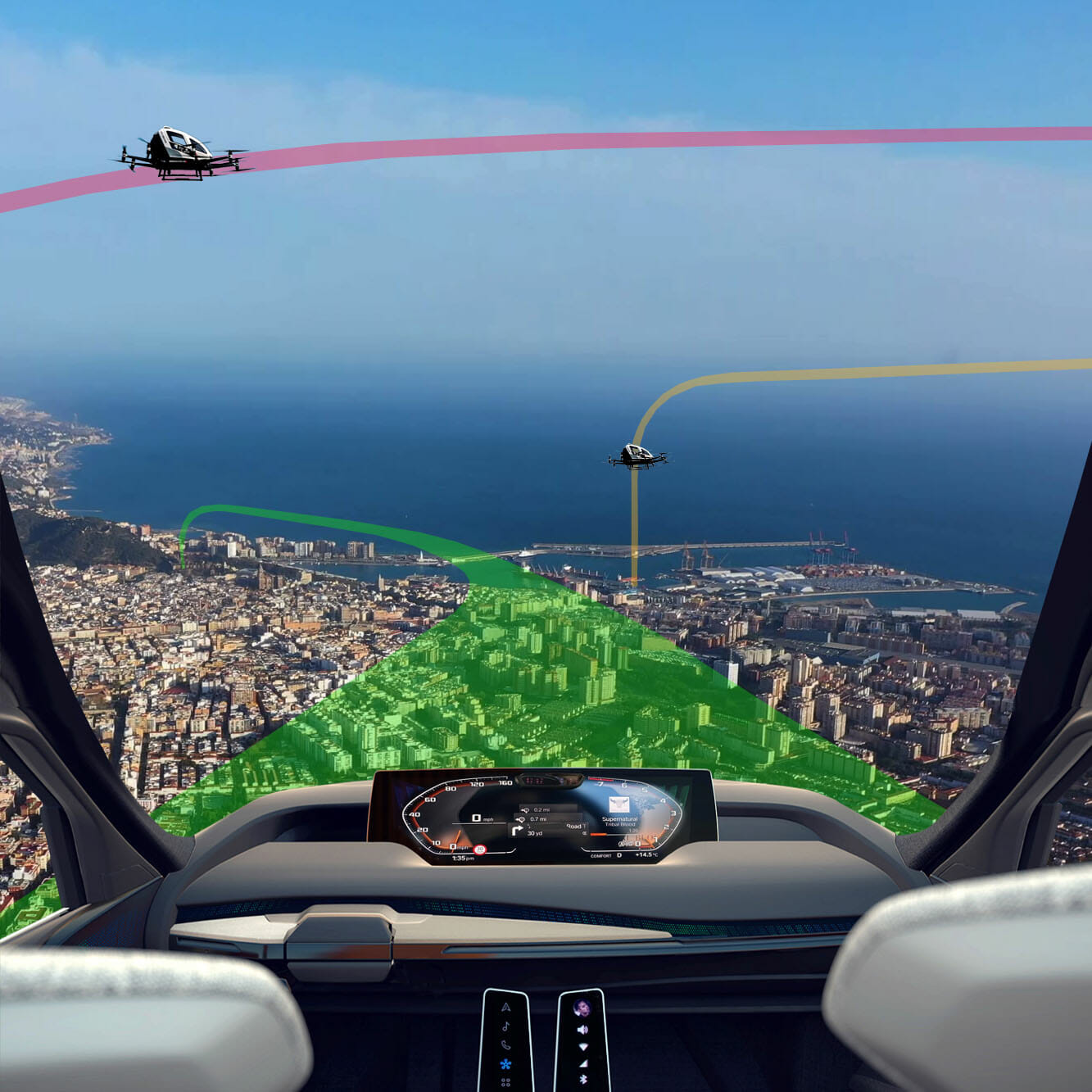
City, technology and people
Our city landscapes change over time, and they’re undoubtedly doing so right now. Beyond a horizon of buildings and streets, cities are also… people.
The transformation of metropolitan areas will be marked in coming years by a new key concept: Advanced Air Mobility.
We will soon be sharing space with electric vertical take-off and landing (eVTOL) vehicles that will be integrated into multimodal transport networks, which will, in turn, be part of regional or even larger-scale systems.
Much of the technology needed for this major change is already here, and the rest will be arriving in very short order. These are no longer ideas, but realities.
We innovate in AAM and we want to share it to create synergies that let us achieve more efficient and sustainable urban mobility. Want to know more?
Our keys...
- Planning and design of vertiports and droneports: A complete network of eVTOL airports will facilitate the development of AAM. They will all have to comply with complex aviation regulations.
- Consultancy for UAS services (routes, platforms and use cases): Each transport type will require a specific vehicle model for the system to be as efficient as possible.
- Integration with the network of urban transport systems: AAM must coexist and share resources with other transport systems, both terrestrial and aerial, with specific standards in each case.
- Oversight by aviation authorities: Current and future air vehicles must be properly certified by aviation authorities, as must their ground-based facilities.

Check out more by downloading our infographic on Advanced Air Mobility (click here)
May we help you?
Advanced
It is an innovative multimodal transport system for people and goods by air that works in an efficient, automated, intelligent and sustainable way.
The aerial operations will take place over populated (intercity or urban) areas, regardless of the type of aircraft in question.
Air
The use of the term “air” often focuses on the aircraft component and its transition through the airspace. In general, AAM refers to electric vertical take-off and landing (eVTOL) aircraft operating from vertiports with air traffic management (ATM) and U-space services. AAM also includes conventional helicopters, aeroplanes and drones.
Mobility
This includes the intermodal movement of people and goods by air in urban, peri-urban and rural settings, as well as its inherent ties to other mobility services, such as bicycles, motorcycles, trams, trains, buses and cars. All of them are integrated and complement one another to increase the efficiency of the system as a whole.
Among the benefits that AAM can bring to urban, peri-urban and rural environments, people identify (according to a study conducted by EASA) the following:
- 71% – Shorter emergency response times.
- 51% – Fewer traffic jams.
- 48% – Less pollution from burning fossil fuels for transport.
- 41% – The possibility to further develop remote or isolated regions.
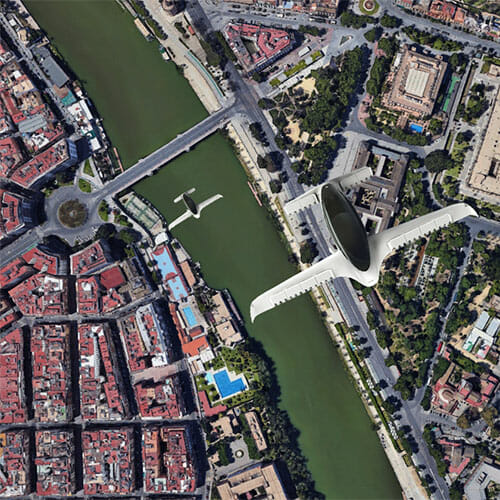
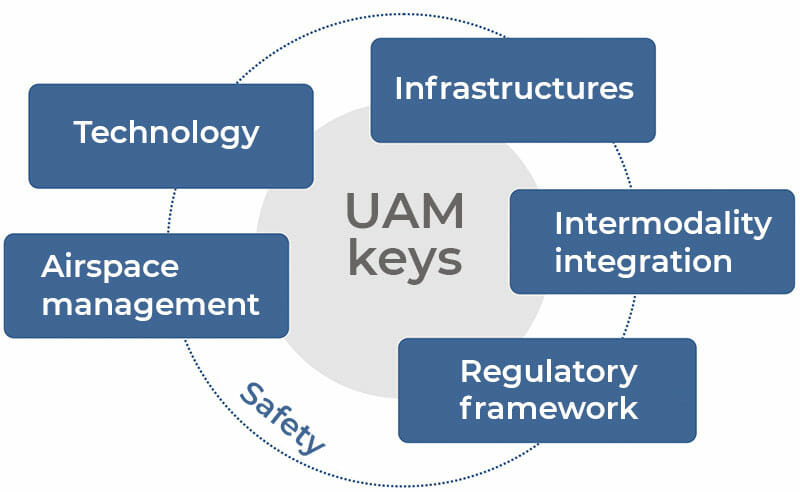
AAM will be vital in the definitive leap towards transport intermodality. The necessary technology is already available, although innovation is ongoing to improve the efficiency of the solutions. We will have to develop new facilities (vertiports and loading stations), as well as a regulatory framework needed to manage common airspace that is (operationally, physically and electronically) safe and efficient.
Related articles
U-space, the air we...
Aircraft, whether manned or unmanned, constitute a growing sector worldwide. They form part of a scenario that…
Advanced Air Mobility. A...
The transportation of people and goods has been essential for human development. This has meant the creation…
A safe, reliable and...
As part of the TRANSFIERE Forum, the European Meeting on Science, Technology and Innovation held in Malaga…
Infrastructures in Advanced Air...
Advanced Air Mobility is imminent in some urban environments, although these are experiences aimed at consolidating knowledge…
Infrastructures in Advanced Air...
We have been dreaming about them for many years and they are finally here. They are the…
The challenge of managing...
We are playing a key function in the huge transformation of cities, with an undertaking that is…
Vertical Airports: The mobility...
From “Back to the future” to “The Fifth Element”, urban air mobility has been a recurring feature…
The current air taxi...
The emerging concept known as Urban Air Mobility (UAM), is one of the most interesting markets the…
Air taxis on the...
For years, countless books, films and documentaries have attempted to depict the future of the world. While…
The autonomous air taxi
Several companies are already testing autonomous air vehicles for passenger transport. Are we ready to take the…
Convertible aircraft
A convertible aircraft is one that is capable of taking off and landing vertically, like a helicopter…
The evolution of personal...
The development of personal aerial vehicles has been a constant theme in the minds of aviation innovators…
Personal air vehicles
Soon you will be flying your own aircraft. From your backyard to anywhere you want. Preposterous? The…

